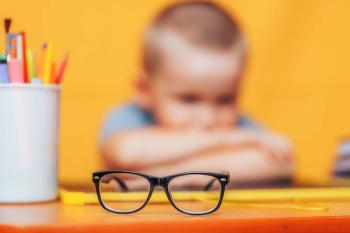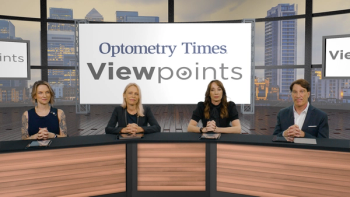
AAOpt 2022: Beyond spectacles: considerations for children with refractive error
Contact lenses can be beneficial for children, even when not medically necessary, explains Jennifer Fogt, OD, FAAO, FSLS.
This article was reviewed by Jennifer Fogt, OD, FAAO, FSLS.
Spectacles are traditionally the first choice for children with refractive error, but pediatric patients have been shown to be successful with contact lenses, even when using eye drops.
Jennifer Fogt, OD, FAAO, FSLS, discussed the reasons to fit children with contact lenses and how to approach the fitting process, keeping in mind the best interests of the child and parents, in a presentation at the American Academy of Optometry annual meeting in San Diego, California.
“We have so many options when correcting vision with contact lenses and finding the best lens option can greatly benefit the child,” said Fogt, who is an assistant professor at the Innovation in Vision and Eye care Research Group (iVERG) at The Ohio State University College of Optometry in Columbus, Ohio. “Ocular health is always the most important factor and vision quality should never be sacrificed for contact lens wear for any reason.”
Since not all children may be emotionally ready to consider contact lenses, a risk/benefit assessment should be made. Factors to consider are whether the child’s vision can be improved with contact lenses compared with spectacles, and whether the visual field will be improved by removing the effect of magnification due to high plus powered spectacle lenses.
Other factors include whether the eye condition will progress less with contact lens wear than with other treatment options and whether the child’s quality of life can be improved by not wearing spectacle frames.
High hyperopia or anisometropia
High hyperopia or anisometropia can rapidly cause amblyopia if untreated. An earlier retrospective study1 showed further improvement of vision with contact lens wear in 21 anisometropic amblyopes who had already been “maximally treated” for amblyopia with occlusion therapy and spectacle wear.
As high hyperopia and anisometropia are often detected at pre-school, techniques to teach children how to insert and remove the contact lenses may need to be modified from those used with older children or adolescents. While daily disposable lenses are beneficial, thick modulus designs improve handling. If high astigmatism is present, a gas permeable corneal lens should be considered. For very young children, particularly those with amblyopia, soft toric contact lenses should only be used if visual acuity with contact lenses is better than best corrected visual acuity with spectacles.
Contact lens options for myopia control
The topic of contact lens wear by children with myopia will need to be introduced to the parents/children, which can be straightforward for parents/children who already wish to wear lenses. However, the clinician will have to plan how to discuss introducing this to a parent/child who has not yet considered contact lenses, along with managing parent expectations. The risks versus benefits in myopia control with contact lenses will need to be discussed, along with potential off-label treatments.
Contact lens options for myopia control may include orthokeratology and center distance multifocal soft lenses. With both of these options, patient and ocular considerations along with the fitting process come into play. Parental involvement may be helpful for some children, while many clinic visits may be required and parents need to commit to ensure success.
“When considering treatment to slow myopia with contact lenses, you should look at the current amount of myopia, the presence of astigmatism and the corneal topography,” Fogt said. “You should also consider the maturity of the child and whether the child is emotionally capable of lens wear and able to maintain good contact lens hygiene.”
Low dose atropine as an option in myopia control
“We really need to get FDA approval of low dose atropine so we do not have to prescribe this off-label or use compounding pharmacies,” Fogt said. “I encourage optometrists to refer patients to current studies so that we can complete the large studies needed for this to happen.”
Low dose atropine is a good option for children who do not have a prescription that can be corrected with contact lenses.
Considering dosage is important.
“The ATOM and LAMP studies have given us a lot of information, and based on the most recent findings from LAMP, 0.05% atropine is more effective than lower concentrations,” Fogt explained “The higher the concentration used, the more likely that side effects, such as photophobia and near blur can occur. If side effects occur, switch to a lower concentration.”
Patients need to be corrected with their cycloplegic refraction to ensure they are not over-corrected for myopia, as adding low dose atropine to an over-corrected eye can make near work more difficult.
Final thoughts
“I hope that practitioners will consider contact lenses for patients who may see better with them than with spectacles – and will talk with patients about myopia control so that all parents know what options exist,” Fogt said.
Reference
Fogt JS. Further improvement in visual acuity with contacts lenses in previously treated anisometropic amblyopia. Invest Ophthalmol Vis Sci. 2014;55(13):803.
Newsletter
Want more insights like this? Subscribe to Optometry Times and get clinical pearls and practice tips delivered straight to your inbox.






































